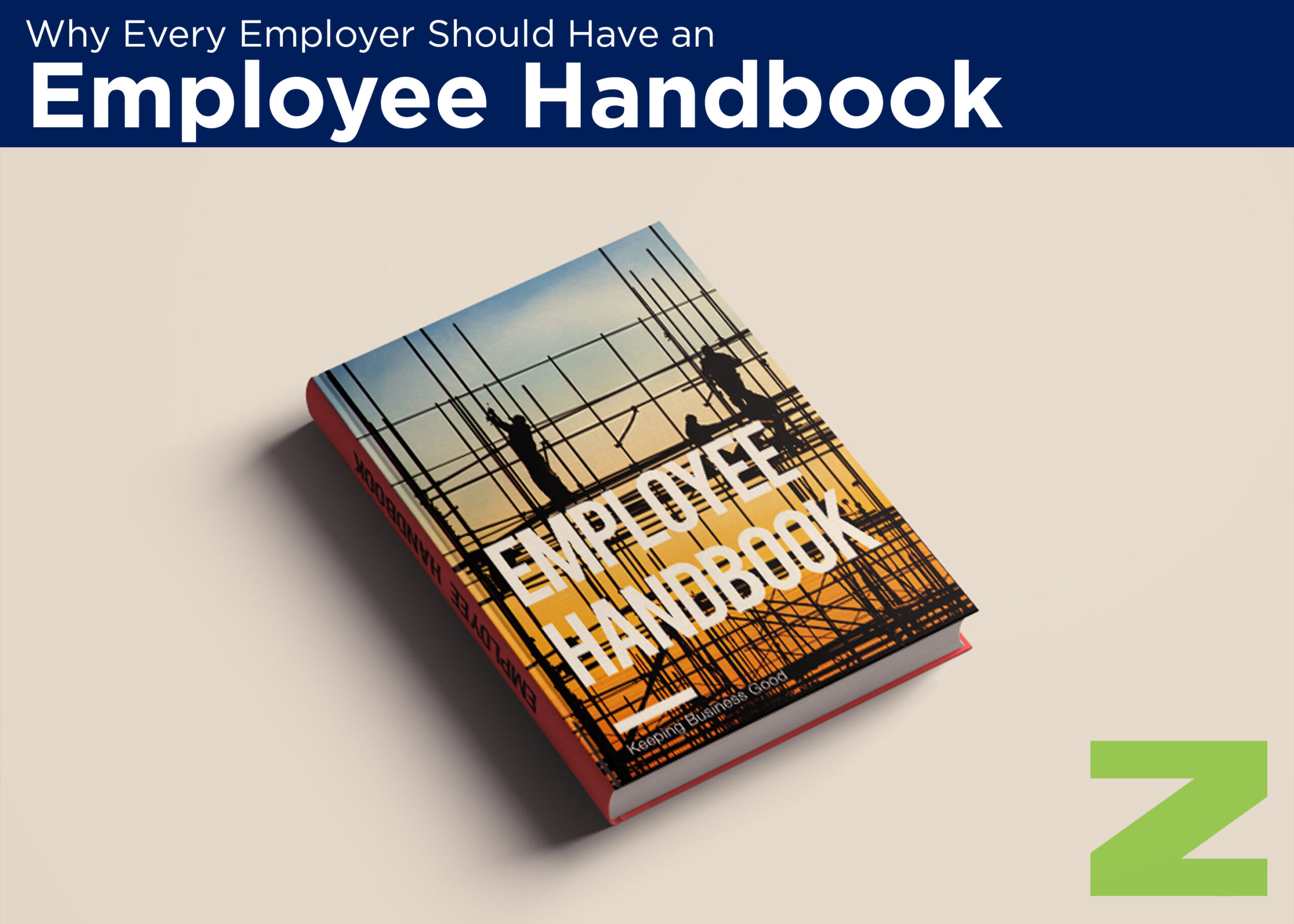As most employers know all too well, the number and cost of employment-related law suits continue to rise each year. In 2016, more than 10 percent of small to mid-size businesses faced an employment charge of discrimination of some kind, most of which involved more than one claim (i.e., discrimination based on race, sex, disability, and/or retaliation). The average time to settle one of those claims was 318 days! Worse yet, nearly one fourth of those charges resulted in defense and settlement costs averaging $160,000 per claim.1
If you are an employer, you live with the risk of facing expensive, time-consuming lawsuits for any number of reasons. You can reduce that risk with preventative measures such as training managers in risk-related areas including hiring and disciplinary procedures; training for employees regarding harassment; and finally – and this one is huge – an up-to-date employee handbook.
Though no federal or state law requires an employer to have an employee handbook, it is actually one of your best legal defenses in the event of an employee, or former employee, filing a claim against you. Here’s why:
• Your employee handbook can help create a defense related to claims of harassment, discrimination, wage and hour issues, the Family and Medical Leave Act (FMLA) and/or the Americans with Disabilities (ADA). A handbook confirms your policies on these matters and your commitment to follow all applicable laws. Of course, you will need to follow these policies consistently in order for them to benefit you as part of a defense.
• A good employee handbook can also prove invaluable during a hearing for an unemployment compensation claim where the employee is terminated for violating a workplace rule. Without a handbook (and a signed acknowledgement of receipt from the former employee), you have very little hope of proving that the employee knew of the policy or procedure they were accused of violating.
In addition to the legal help, a well-written employee handbook offers these great benefits:
1. It is a powerful welcome to a new employee. It tells your new hire that you are ready for them. By equipping them with this good information, you show them that you care about your employees and that you want them to succeed in their new role.
2. It is an excellent means of consistent communication with all employees because it allows employers to: (a) express the corporate culture (by tone and content); (b) set mutual expectations between employees and management; (c) let employees know important details about their employment, like what they should do if they are too sick to work, how they manage their vacation time, how often they will be paid, who is eligible for holiday pay, what happens in the event of severe weather, what to do if they need an accommodation of some kind, etc. A well-written handbook should mean fewer questions to your supervisors and your human resources team.
3. It empowers front line supervisors and middle managers. Just as it answers questions for your hourly employee, it’s a great reference for you supervisors! In fact, the employee handbook should be included as an essential part of supervisor training. If your supervisors aren’t familiar and comfortable with the employee handbook, they will not be consistent in applying your policies which will create a breeding ground for legal claims.
4. It offers protection for the company by establishing certain rights for the employer, such as the right to conduct a workplace investigation and inspect property at any time, the right to search electronic records, including any emails or internet searches conducted on company equipment, the right to conduct drug and alcohol testing under specified circumstances, the right to modify or interpret company policies, etc.
5. Lastly, it serves as one central location for notifying employees of reporting procedures should they experience or witness harassment or discrimination, for notifying employees of FMLA rights (if appropriate), and for clearly stating whether or not you will pay out unused vacation at the end of employment.
Some employers argue that their organization has more discretion when policies are not written down, since there is nothing to which management can be held accountable. By failing to clearly communicate your policies, you expose the company to a host of serious issues such as discriminatory treatment claims, disorganization, confusion among employees and morale issues.
With effective written policies presented to all employees in the employee handbook, your organization is much more likely to manage all employees consistently. By consistently applying your policies, you are greatly reducing your risk of facing a charge of discrimination.
Unfortunately, even for companies that understand the value, this is one project that frequently gets relegated to “back burner” status, leaving it to be addressed “when things slow down a bit.” But lawsuits never take vacations, so this is a project you will want to get done.
If your organization is operating without an employee handbook, or with an outdated handbook, now is the best time to make that right. Just a quick word of warning: the answer will not be found in a “fill-in-the-blanks” template handbook, nor in a handbook you borrowed from another business or found on the internet. Handbooks need to be customized to your company, your state and local laws, your industry, your company’s unique challenges and your company culture. Your handbook should also be reviewed by an attorney that specializes in employment law. Laws and your policies change so handbooks should be updated at least every other year.
If you need help with the creation of a new handbook or updating an existing handbook, give us a call.
1From the 2017 Hiscox Guide to Employee Lawsuits and its representative study of 1,214 closed claims reported by small- to medium- sized employers (fewer than 500 employees).
Disclaimer: The information provided on this web site is for informational purposes only and not for the purpose of providing legal advice.





